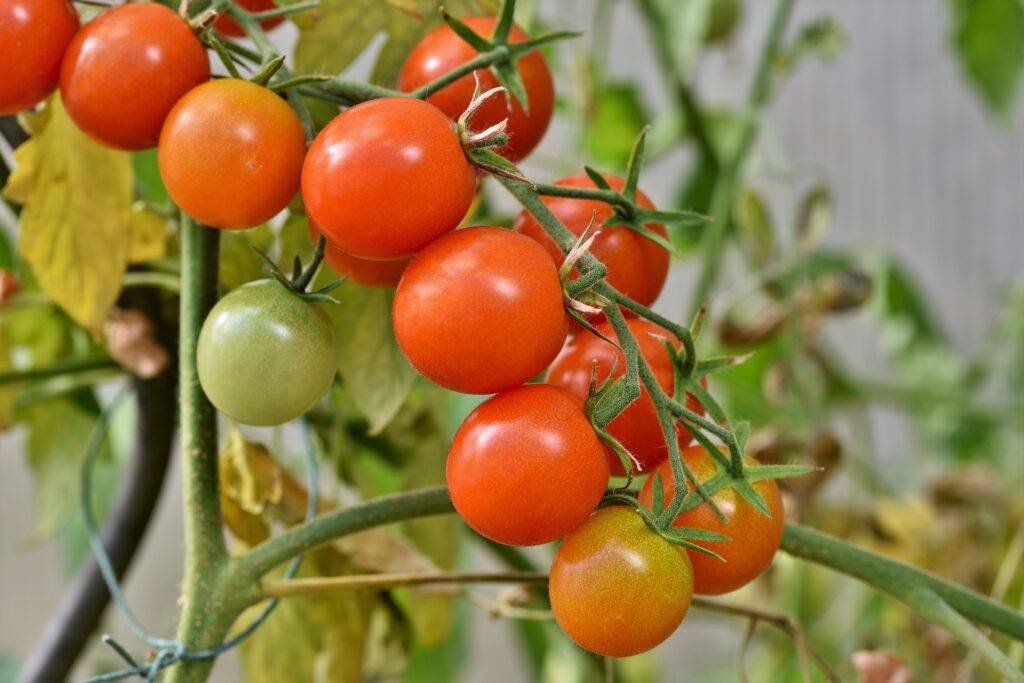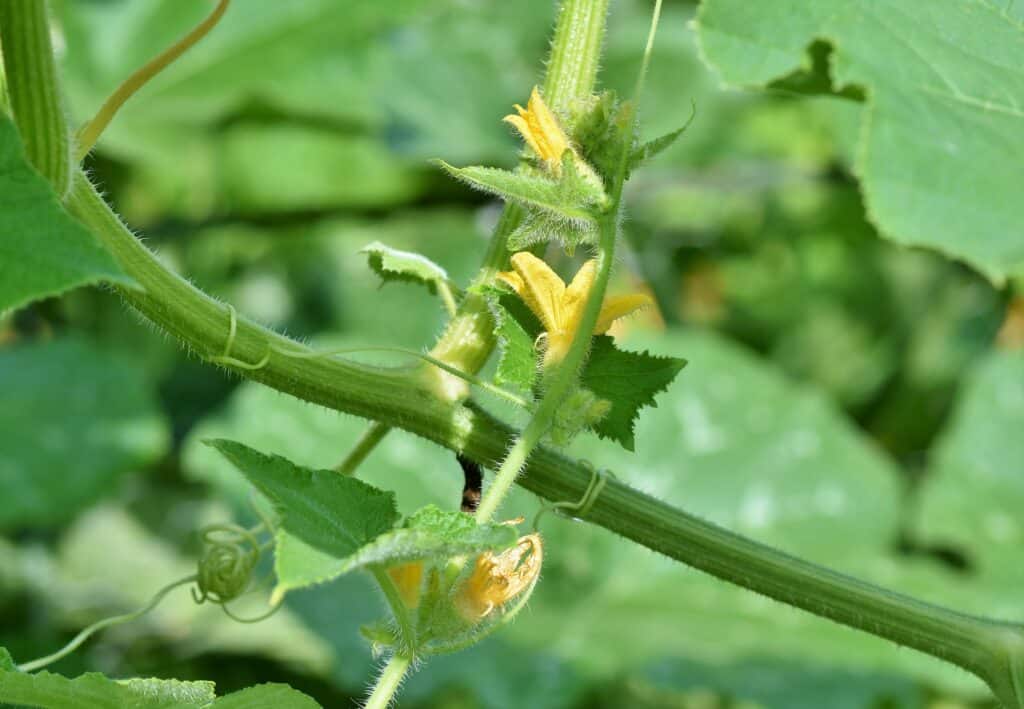
What is the most popular fruit grown in our home gardens? You know it as a tomato. Botanically it is a fruit as are zucchini, peppers, cucumbers, beans and peas. Nutritionists call them all vegetables, mainly because we eat them as savory dishes. But by whatever classification, a tomato is what so many of us want to grow.
This month and next we’re going to share some information with you that we’ve gathered from a number of experienced gardeners.You won’t find a list here of which tomatoes to grow—you can decide for yourself.
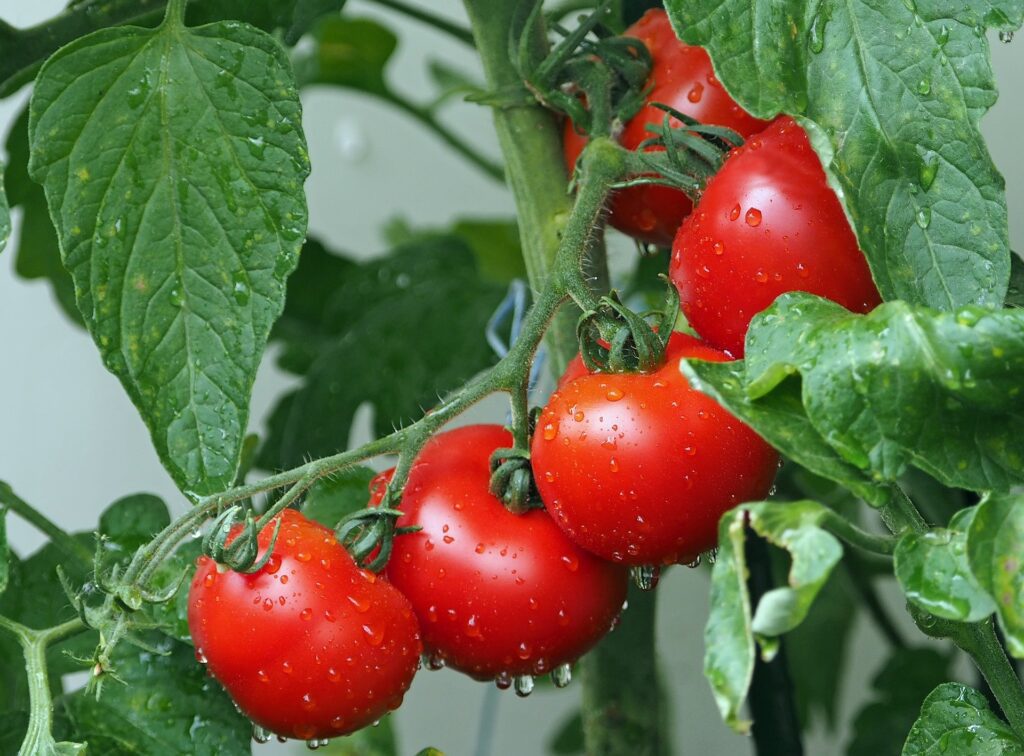
But things to first consider in your choice might be:
- In ground or container– which leads to
- Determinate (most tomatoes ripen at the same time)—or
- Indeterminate (larger, more sprawling, fruits produced and ripen until frost)
The next most important choice is when to plant.
Tomatoes are warm-season plants. Do not set them out too early! Wait until all danger of frost has passed. If planted too early they may become stressed, damaged or even killed by frost. Temperature extremes adversely affect blossom development and subsequent fruit set. Blossom drop will occur in the spring if daytime temperatures are warm, but night temps drop below 55 degrees. So be patient and you will reap your reward. Crops planted when the weather has settled usually catch up to those planted earlier.
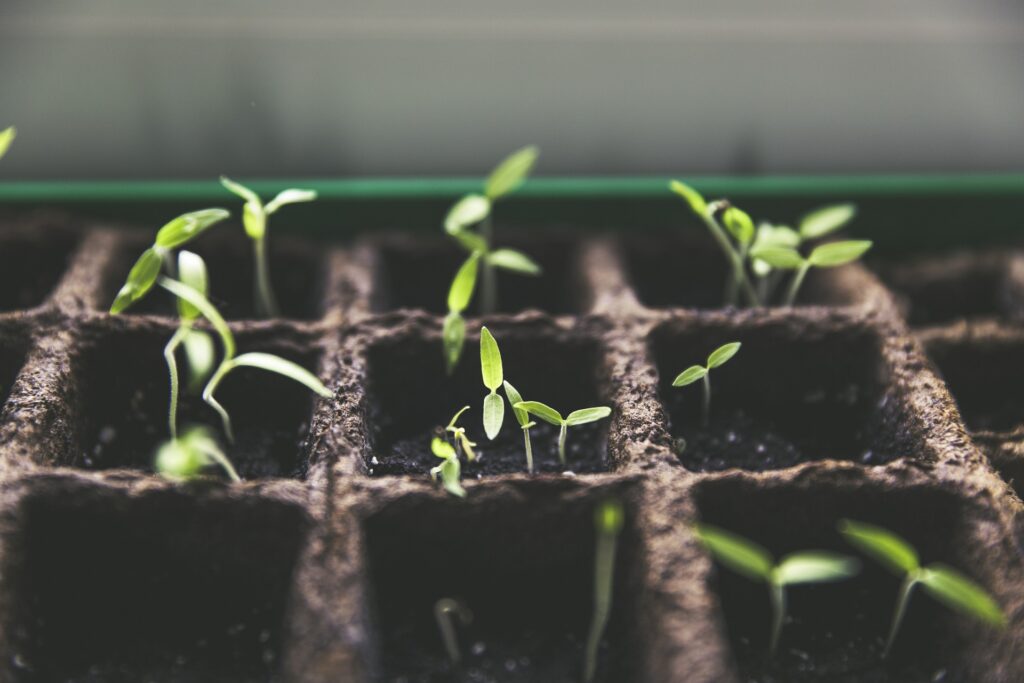
You can check average frost dates and when to plant with our handy planting calculator.
OK. You have your plants, and you’re ready to pop them in the ground. Dig a little hole and drop it in……
Wait! Not so fast. Make sure you have first watered that tomato and that it has been hardened off. (Link) Then dig a DEEP hole because you are going to remove all the leaves except the top couple sets and put that whole stem in the hole. You can even lay it sideways and carefully curl the top to stand up. Roots will grow from the entire planted stem giving you a strong, healthy plant.
You will plant this way either in the ground or in a container. So let’s talk more specifically about growing tomatoes in a container. (Most of this is very similar for any container-grown vegetable.)
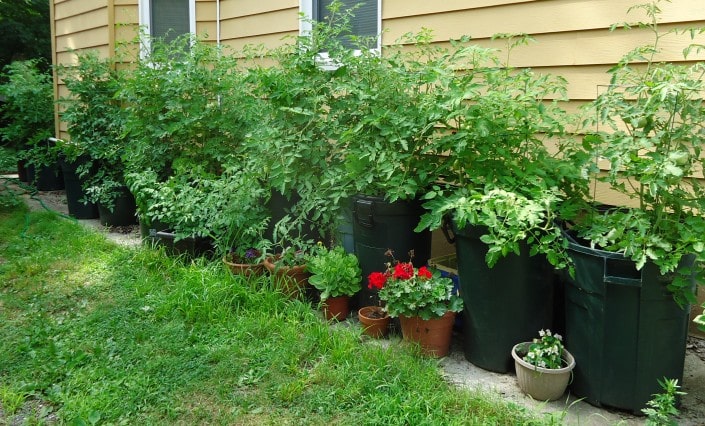
Use a large enough container—you will just waste your time and effort with anything less than a deep 14” pot. A five-gallon bucket is an ideal container; a small barrel works as well. Make sure it has a drainage hole. Your plants should not sit in water but should not dry out between waterings as that is just asking for blossom end rot.
Use potting soil or soilless mix completely to the bottom of the container—no filler or rocks on the bottom. Don’t use garden soil—it will compact and prevent your plant roots from obtaining nutrients and oxygen from the soil.
Water, water, water—tomatoes are 95% water, so they use a lot. You will likely need to water every day, possibly twice a day in the hottest weather.
Feed them—tomatoes are voracious eaters. It’s best to fertilize about once a week. You will be rewarded with plentiful, gorgeous tomatoes.
Stake them—even dwarf tomatoes in containers need support so they can support all those juicy tomatoes. It also helps deter slugs and disease.
These are the basics to get you started on your tomato garden journey. Next month we’ll talk more about:
- Staking
- Pruning
- Insect and disease control
